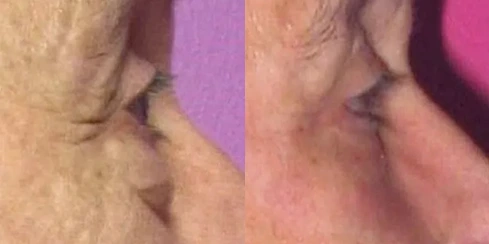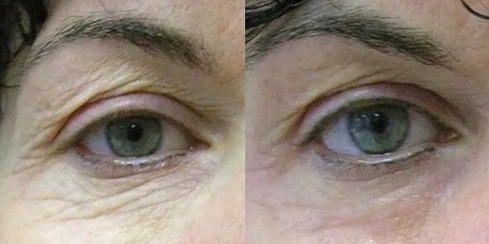Table of Contents
Undergoing breast augmentation is an exciting step toward achieving your ideal body contour, but the recovery process requires careful attention—especially when it comes to how do you sleep after breast augmentation. Sleep plays a crucial role in healing by reducing swelling, promoting tissue repair, and managing post-surgical discomfort. However, many patients find it challenging to sleep comfortably after surgery while also protecting their new implants.
Finding the right sleeping position is essential for a smooth recovery. The way you sleep can impact your healing time, implant positioning, and overall comfort. Many patients wonder, how long do you sleep upright after breast augmentation, or when they can return to sleeping on their side or stomach. Understanding the proper sleeping posture is key to preventing complications such as implant shifting, increased swelling, and unnecessary pain.
This guide will answer all your questions about how do you sleep after breast augmentation and provide practical tips to ensure you rest comfortably while supporting your recovery. Whether you are adjusting to sleeping on your back or looking for ways to reduce discomfort, following the right sleep habits will help you heal faster and achieve the best possible results.
Why Is Sleeping Position Important After Breast Augmentation?
Recovery after breast augmentation is more than just resting—it requires careful attention to how do you sleep after breast augmentation to ensure proper healing. The position you sleep in during the first few weeks can affect swelling, implant stability, and overall comfort. Sleeping incorrectly can lead to unnecessary complications, including implant shifting, increased pain, and prolonged recovery time.
One of the primary reasons sleep position matters is the pressure placed on the breasts. Lying on your stomach too soon can cause implants to shift, while sleeping on your side may result in uneven healing or increased swelling. Keeping your upper body elevated and lying on your back allows the implants to settle correctly and reduces tension on the chest muscles.
A common concern among patients is how long do you sleep upright after breast augmentation. Most surgeons, including Dr. Metzinger, recommend sleeping in an elevated position for at least one to two weeks. This helps reduce fluid buildup, improve circulation, and minimize discomfort. After this period, transitioning to sleeping flat on the back is generally safe, but side and stomach sleeping should still be avoided until cleared by your surgeon.
How Do You Sleep After Breast Augmentation Best Positions
One of the most common concerns after surgery is how do you sleep after breast augmentation in a way that supports healing and prevents complications. The right sleeping position can reduce swelling, minimize discomfort, and help implants settle properly. While adjusting to a new sleep posture can be challenging, following these guidelines will ensure a smoother recovery.
Sleeping on Your Back – The Best Position
The safest way to sleep after breast augmentation is on your back with your upper body slightly elevated. This position helps reduce swelling, prevent fluid buildup, and minimize strain on the incisions. Elevation also improves circulation, which speeds up healing.
- Use a wedge pillow or stack two to three firm pillows to keep your upper body raised at a 30- to 45-degree angle.
- Place pillows on either side of your body to prevent rolling over while sleeping.
- If you experience lower back discomfort, place a pillow under your knees for added support.
Sleeping in a Recliner for Extra Support
Some patients find it difficult to stay in an elevated position on a flat bed. A recliner chair can be an excellent alternative, as it provides consistent back support while keeping you upright. This option is especially useful during the first one to two weeks when swelling is at its peak.
- Choose a recliner that allows you to sleep at a gentle incline without putting too much pressure on your lower back.
- Keep a small pillow or rolled-up towel behind your lower back for added lumbar support.
- Consider using a travel neck pillow to prevent neck strain while keeping your head elevated.
Why You Should Avoid Sleeping on Your Side or Stomach
Many patients ask when they can return to sleeping in their usual position. However, sleeping on your side or stomach too soon can cause complications, including:
- Implant shifting or asymmetry, leading to an unnatural appearance.
- Increased swelling and discomfort due to added pressure on the chest.
- Strain on incisions, which can delay healing and increase scarring.
Most plastic surgeons, including Dr. Metzinger, recommend waiting at least six weeks before transitioning to side sleeping. Stomach sleeping should be avoided for at least three months or until your surgeon gives approval.
Transitioning Back to Normal Sleeping Positions
Once you are further along in recovery, your surgeon may allow you to gradually shift positions. To ease into side sleeping:
- Use a body pillow to support your chest and prevent excessive pressure.
- Start by slightly tilting your body to one side while still keeping your upper back elevated.
- If you feel discomfort, return to sleeping on your back and try again in a few days.
How Long Do You Sleep Upright After Breast Augmentation?
A common question among patients is how long do you sleep upright after breast augmentation. Elevating your upper body during sleep is essential in the early stages of recovery to minimize swelling, prevent fluid buildup, and protect the implants. While each patient’s healing timeline is unique, most plastic surgeons, including Dr. Metzinger, recommend sleeping upright for at least one to two weeks after surgery.
Why Sleeping Upright Is Necessary
Sleeping in a semi-reclined position keeps pressure off the chest and encourages proper circulation, which helps reduce post-operative swelling. Lying flat too soon can increase fluid retention, leading to discomfort and prolonged healing.
Recommended Upright Sleeping Duration
- Week 1-2: Sleep with your upper body elevated at a 30- to 45-degree angle using pillows or a recliner.
- Week 3-4: Transition to sleeping flat on your back, as long as swelling has significantly decreased.
- After Week 6: Most patients can begin side sleeping if approved by their surgeon, but stomach sleeping should still be avoided.
Tips for Staying Comfortable While Sleeping Upright
Adjusting to an elevated sleeping position can be challenging, especially if you are not used to sleeping on your back. Here are some ways to make the process easier:
- Use a wedge pillow to maintain elevation without shifting during the night.
- Sleep in a recliner if lying in bed feels uncomfortable or difficult.
- Place extra pillows around your body to prevent rolling over in your sleep.
- Wear a supportive surgical bra to minimize discomfort and help stabilize the implants.
Understanding how do you sleep after breast augmentation and following the correct sleeping posture for the recommended duration can significantly improve healing.
Pillows and Sleep Aids to Help You Sleep After Breast Augmentation
Proper support is key to maintaining comfort and stability while healing, which is why many patients look for the best pillows and sleep aids when learning how do you sleep after breast augmentation. The right pillows can help you stay in an elevated position, prevent rolling onto your side, and reduce strain on your back and neck.
The Best Pillows for Sleeping After Breast Augmentation
- Wedge Pillow: A foam wedge pillow is one of the best investments for post-surgical sleep. It keeps your upper body elevated at the recommended 30- to 45-degree angle, reducing swelling and promoting circulation.
- Body Pillow: A long body pillow placed along your side can prevent unintentional rolling while sleeping. It also offers support when transitioning to side sleeping after the six-week mark.
- Neck Pillow: A U-shaped travel neck pillow can help keep your head aligned, especially if you are sleeping in a recliner.
- Knee Pillow: Placing a small pillow under your knees can relieve lower back tension, making sleeping on your back more comfortable.
Recliner vs. Bed: Which Is Better?
Many patients find that sleeping in a recliner is easier during the first one to two weeks after surgery. A recliner helps maintain an upright position and reduces the risk of accidentally rolling over. However, if you prefer sleeping in a bed, using the right pillows can mimic the support of a recliner.
- Choose a recliner if you struggle to stay elevated while sleeping in bed.
- Use stacked pillows or a wedge pillow if you prefer staying in your bed.
- Ensure proper lumbar support by placing a pillow behind your lower back to prevent stiffness.
Additional Sleep Aids for a Comfortable Recovery
- Silk or satin pillowcases to reduce friction and make adjusting positions easier.
- Cooling gel pads to help with post-surgical swelling and discomfort.
- Weighted blanket (lightweight version) for added comfort and relaxation without applying pressure to the chest.
- Adjustable bed frame if available, as it allows for controlled elevation without needing extra pillows.
Using the right sleep aids can make recovery much easier, ensuring that you get quality rest while keeping your implants protected.
What to Avoid Before Bed for Better Sleep After Breast Augmentation
A smooth recovery depends not only on how do you sleep after breast augmentation but also on your nighttime habits. Certain factors can interfere with sleep quality, increase discomfort, and even slow down healing. To ensure a restful night, it’s important to avoid these common mistakes.
Caffeine, Alcohol, and Sugary Foods
- Caffeine: Coffee, tea, soda, and chocolate should be avoided at least six hours before bedtime, as caffeine can make it harder to fall asleep.
- Alcohol: While alcohol may initially make you feel sleepy, it disrupts deep sleep and can lead to nighttime restlessness. It can also interfere with pain medications prescribed after surgery.
- Sugary foods: High-sugar snacks and processed foods can cause blood sugar fluctuations, making it difficult to stay asleep throughout the night.
Sleeping Pills and Certain Medications
- Avoid taking over-the-counter sleep aids unless approved by your surgeon. Some medications may interact negatively with pain relievers or antibiotics prescribed after surgery.
- Never mix sleeping pills with narcotic pain medications, as this can cause dangerous side effects, including respiratory depression.
Screen Time and Blue Light Exposure
- Phones, tablets, and TVs emit blue light, which suppresses melatonin production and makes it harder to fall asleep.
- Try to avoid screens for at least one hour before bed, or use blue light-blocking glasses if you must use electronic devices.
Late-Night Eating and Drinking
- Eating large meals before bed can cause bloating and discomfort, making it harder to relax. Try to finish dinner at least two to three hours before sleeping.
- Drinking too many fluids right before bed can lead to frequent bathroom trips, disrupting sleep.
Lack of a Relaxation Routine
- Going to bed stressed or anxious can make falling asleep difficult. Try deep breathing exercises, meditation, or listening to calming music to relax before bedtime.
- A warm shower before bed can also help relieve muscle tension and improve circulation, making it easier to sleep.
By avoiding these common mistakes, you can improve your sleep quality and ensure a comfortable recovery after breast augmentation.
Should You Wear a Bra to Sleep After Breast Augmentation?
One of the most frequently asked questions about recovery is how do you sleep after breast augmentation and whether wearing a bra at night is necessary. The answer is yes—wearing a bra while sleeping is an essential part of the healing process, helping to support the implants, reduce swelling, and maintain breast shape.
Why Wearing a Bra at Night Is Important
- Prevents excessive movement: After surgery, your breast tissue and implants need time to settle. A supportive bra holds them in place, preventing unnecessary shifting.
- Reduces swelling: Compression from a surgical bra helps minimize post-operative swelling by promoting circulation and preventing fluid buildup.
- Provides comfort and support: Without a bra, the added weight of implants can cause discomfort, especially when sleeping on your back.
What Type of Bra Should You Wear?
Not all bras are suitable for post-surgical recovery. The right bra should provide support without compressing too tightly.
- Surgical bra: Most surgeons, including Dr. Metzinger, recommend wearing a medical-grade surgical bra for at least six to eight weeks after surgery. These bras are designed to keep the breasts in the correct position while allowing for proper blood flow.
- Front-closure sports bra: After the initial healing phase, a soft, wire-free sports bra can provide gentle support while sleeping.
- Avoid underwire bras: The wires can irritate incisions and disrupt healing, especially if your surgery involved incisions along the breast crease.
How Long Should You Wear a Bra While Sleeping?
- First six weeks: A surgical bra should be worn 24/7, including while sleeping.
- Weeks six to twelve: A supportive sports bra is recommended, but some patients may begin sleeping without a bra if cleared by their surgeon.
- After three months: Some patients may choose to sleep without a bra, but wearing one can still help maintain breast shape and support over time.
How to Minimize Pain While Sleeping After Breast Augmentation
Discomfort is a normal part of the healing process, and many patients struggle with how do you sleep after breast augmentation without experiencing pain. While soreness and tightness are expected, there are ways to reduce discomfort and improve sleep quality during recovery.
Take Pain Medication Before Bed
- Most plastic surgeons, including Dr. Metzinger, recommend taking prescribed pain medication about 30 minutes before bedtime to ensure comfort throughout the night.
- If using over-the-counter pain relievers, such as acetaminophen, always check with your surgeon to ensure they are safe to take with your prescribed medications.
- Avoid NSAIDs like ibuprofen or aspirin unless approved by your doctor, as they can increase the risk of bleeding.
Use Ice Packs or Cold Compresses
- Applying an ice pack wrapped in a soft cloth to the upper chest area before bed can help reduce swelling and numb pain.
- Never apply ice directly to the skin or surgical incisions, and limit use to 15-minute intervals to prevent irritation.
Adjust Your Sleeping Position for Maximum Comfort
- Sleeping with your upper body elevated at a 30- to 45-degree angle reduces swelling and prevents discomfort caused by fluid buildup.
- Placing a pillow under your knees can help relieve lower back strain, making back sleeping more comfortable.
Wear a Supportive Bra to Reduce Discomfort
- A surgical or compression bra provides gentle pressure that stabilizes the implants and minimizes movement-related pain.
- If pain worsens while wearing a bra, consult your surgeon to ensure it is properly fitted.
Try Relaxation Techniques Before Bed
- Deep breathing exercises can help reduce muscle tension and promote relaxation before sleep.
- Gentle stretching (as approved by your surgeon) may help loosen tight chest muscles and improve circulation.
- Listening to calming music or guided meditation can ease anxiety, which often contributes to disrupted sleep.
When Can You Sleep Normally Again After Breast Augmentation?
A major concern for many patients is when they can return to their regular sleeping positions. Understanding how you sleep after breast augmentation and when it is safe to transition back to side or stomach sleeping is essential for proper healing. While recovery times vary, most surgeons, including Dr. Metzinger, provide general guidelines to help patients adjust safely.
Timeline for Returning to Normal Sleeping Positions
- Weeks 1-2: Patients must sleep on their back in an elevated position to reduce swelling and protect the implants.
- Weeks 3-4: Most patients can begin sleeping flat on their back but should still avoid rolling onto their side or stomach.
- Weeks 6-8: If healing is progressing well, surgeons may allow side sleeping with pillow support to reduce pressure on the implants.
- After 12 weeks: Most patients can return to stomach sleeping, but only if cleared by their surgeon.
How to Transition Back to Side or Stomach Sleeping
- Start with a gradual approach by slightly tilting to one side while keeping your back supported.
- Use a body pillow to reduce pressure on the chest and prevent excessive movement.
- If discomfort occurs, return to sleeping on your back and try again after a few more days.
Signs That Indicate You Are Ready to Sleep Normally
- No significant swelling or tenderness in the breasts.
- Full range of motion in the chest and shoulders without discomfort.
- Surgeon approval, as individual healing times may vary.
Being patient with the recovery process is key to protecting your surgical results and ensuring the best possible outcome.
Smooth Recovery and Restful Sleep After Breast Augmentation
Learning how you sleep after breast augmentation is a crucial part of the recovery process. By following the right sleeping positions, using proper support, and avoiding common mistakes, you can minimize discomfort, reduce swelling, and protect your implants as they heal.
Key Takeaways for Better Sleep and Faster Healing
- Sleep on your back with your upper body elevated for at least the first two weeks.
- Use supportive pillows or a recliner to maintain proper positioning.
- Wear a surgical or compression bra to prevent unnecessary movement.
- Avoid caffeine, alcohol, and late-night screen time to improve sleep quality.
- Take pain medication before bed if needed and follow relaxation techniques to ease discomfort.
- Wait at least six weeks before sleeping on your side and three months before returning to stomach sleeping.
Every patient’s recovery is unique, so it’s important to listen to your body and follow your surgeon’s post-operative instructions. If you have any concerns about your healing progress or need personalized advice on how you sleep after breast augmentation, Dr. Metzinger and the team at Aesthetic Surgical Associates are here to help.
If you’re considering breast augmentation or have questions about your recovery, schedule a consultation today and take the next step toward achieving your aesthetic goals with confidence.
Dr. Stephen E. Metzinger
February 7, 2025







